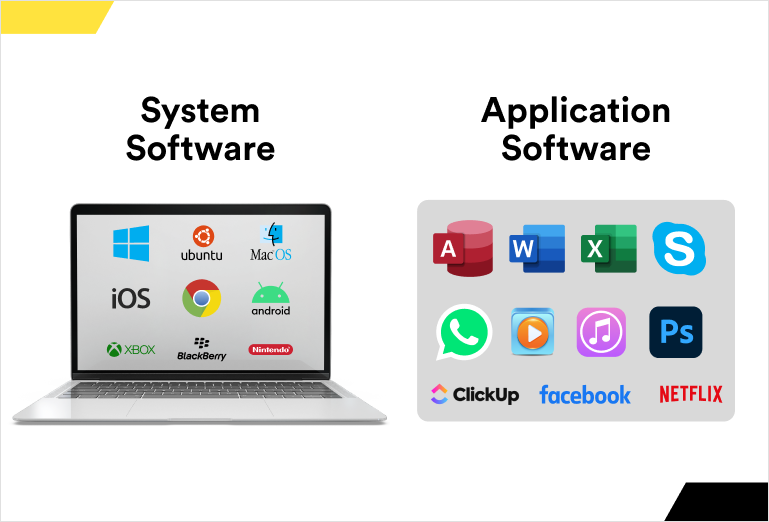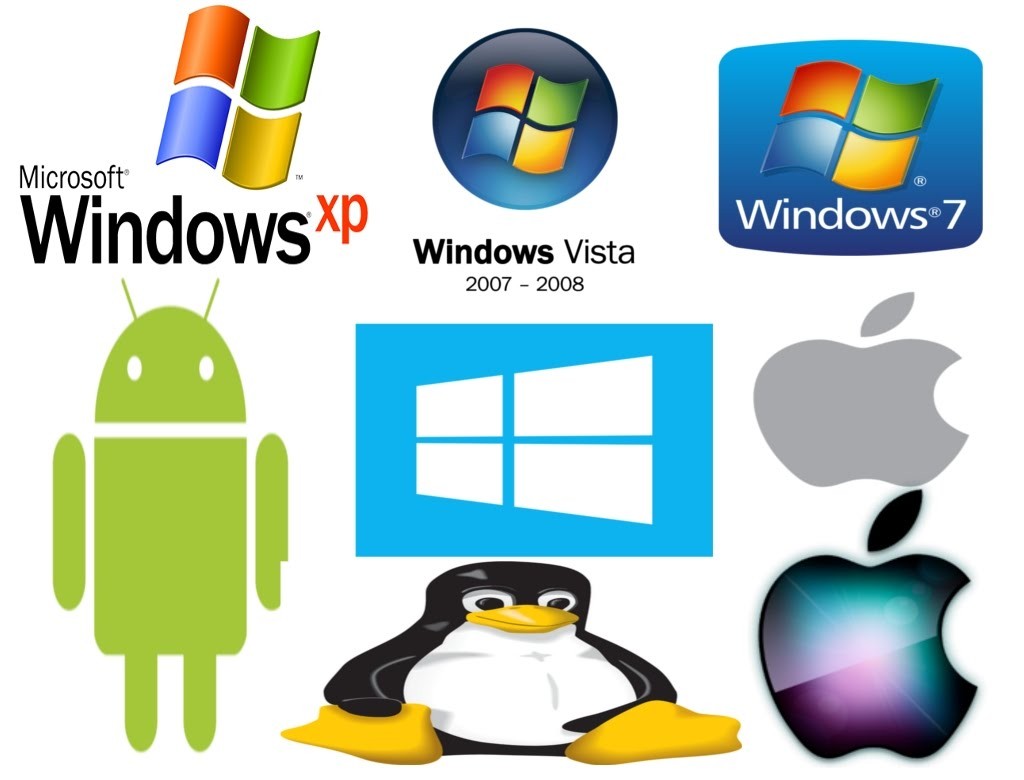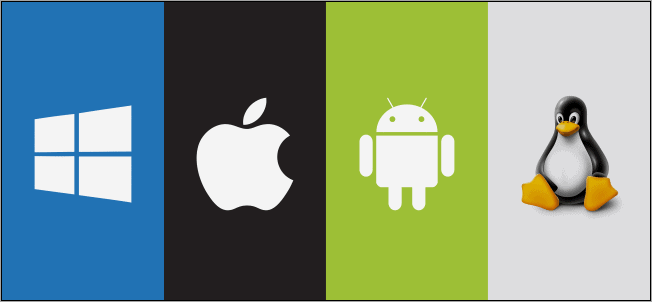So, you’re curious about system software, huh? Well, you’ve come to the right place! In this article, we’re going to explore the world of system software and discover ten examples that play a crucial role in keeping your computer running smoothly. From operating systems to device drivers, we’ll cover it all. Get ready to dive into the fascinating world of system software and learn how these vital tools make your digital life possible. System software refers to the fundamental software that enables a computer’s hardware and other software applications to work together seamlessly. It provides a platform for running computer programs and managing various aspects of system resources. In this article, we will explore 10 examples of system software, including operating systems, device drivers, utilities, programming languages, compilers, interpreters, linkers, debuggers, text editors, and virtual machines.
Operating Systems
Windows
Windows is one of the most popular operating systems, developed by Microsoft. It offers a user-friendly interface and supports a wide range of software applications. Windows provides a variety of features, including multitasking, file management, memory management, and device drivers support.
macOS
macOS is the operating system designed specifically for Apple computers. It is known for its sleek and intuitive user interface. macOS offers advanced features such as built-in security, seamless integration with iOS devices, and strong performance optimization.
Linux
Linux is an open-source operating system that is widely used in servers, desktop computers, and embedded systems. It provides a stable and secure environment, supported by a vast community of developers. Linux offers a wide range of distributions, each with its unique features and target audience.
Device Drivers
Printer drivers
Printer drivers are software programs that enable communication between a computer and a printer. They translate the computer’s commands into a format that the printer can understand. Printer drivers facilitate various functionalities, such as printing, scanning, and faxing.
Graphics drivers
Graphics drivers control the display output of a computer’s graphics card. They ensure that the graphics card functions properly and communicate with the operating system to display images, videos, and other visual content. Graphics drivers play a crucial role in delivering optimal performance and compatibility with different display devices.
Network drivers
Network drivers enable communication between a computer and a network. They provide the necessary protocols and functionalities to connect to the internet, local area networks (LANs), and wide area networks (WANs). Network drivers facilitate data transmission, network configuration, and network security.

This image is property of www.founderjar.com.
Utilities
Antivirus software
Antivirus software is designed to detect, prevent, and remove various types of malware, such as viruses, worms, and Trojans. It scans files, email attachments, and web content to identify and eliminate potential threats. Antivirus software helps protect the system from unauthorized access and data loss.
Disk defragmenter
Disk defragmenter is a utility that rearranges files and data on a hard drive to optimize storage and improve performance. Over time, files become fragmented, meaning they are spread across different sections of the disk. Disk defragmenter consolidates fragmented files and reduces the time it takes to access data.
File compression software
File compression software reduces the size of files by compressing them into a smaller format. Compressed files take up less storage space and can be transferred more quickly over the internet. File compression software also allows users to create archives, combine multiple files into a single file, and encrypt sensitive data.
Programming Languages
C
C is a high-level programming language that is widely used for system programming and software development. It provides low-level access to memory and hardware, making it efficient and versatile. C is valued for its simplicity, speed, and portability.
Java
Java is a popular object-oriented programming language known for its platform independence. It can run on various operating systems and devices, thanks to the Java Virtual Machine (JVM). Java is used for building scalable and secure applications, ranging from web development to mobile app development.
Python
Python is a versatile programming language known for its readability and simplicity. It has a wide range of applications, including web development, scientific computing, artificial intelligence, and data analysis. Python’s extensive libraries and frameworks make it easy to develop complex programs with minimal code.
This image is property of qph.cf2.quoracdn.net.
Compilers
GCC
GCC (GNU Compiler Collection) is a collection of compilers for various programming languages, including C, C++, and Fortran. It is open-source and widely used for Linux-based operating systems. GCC translates human-readable source code into machine-readable code that can be executed by the computer.
Clang
Clang is a compiler based on the LLVM project, which stands for Low-Level Virtual Machine. It supports multiple programming languages, including C, C++, and Objective-C. Clang features advanced error checking, optimization capabilities, and integration with popular development environments.
Visual C++
Visual C++ is a compiler and integrated development environment (IDE) provided by Microsoft. It is primarily used for developing applications and system software on Windows. Visual C++ supports various programming languages, including C++, C#, and F#.
Interpreter
Python interpreter
The Python interpreter is a software program that executes Python code line by line. It reads the source code, checks for syntax errors, and translates the code into machine-readable instructions on the fly. The Python interpreter makes it easy to run Python programs without the need for compilation.
JavaScript interpreter
The JavaScript interpreter is built into web browsers and allows them to interpret and execute JavaScript code. It enables dynamic interactivity on websites, providing functionalities such as form validation, dynamic content updates, and interactive user interfaces.
Perl interpreter
The Perl interpreter is used to execute Perl scripts, which are primarily used for text manipulation, file processing, and system administration tasks. Perl’s interpreter allows for quick scripting and automation, making it popular among system administrators and web developers.
This image is property of qph.cf2.quoracdn.net.
Linkers
GNU ld
GNU ld (linker) is part of the GNU Compiler Collection (GCC). It combines object files generated by the compiler and resolves external references to create an executable or shared library. GNU ld is highly configurable and supports various platforms and file formats.
Microsoft LINK
Microsoft LINK is the linker provided by Microsoft Visual Studio. It links object files and libraries to generate executable files and DLLs (Dynamic Link Libraries). Microsoft LINK offers advanced features such as incremental linking, optimization, and debugging support.
Borland TLINK
Borland TLINK is a linker provided by Borland for their Turbo Pascal and Turbo C compilers. It combines object files to produce executable files that can be run on DOS-based systems. Borland TLINK supports various memory models and customization options.
Debuggers
GDB
GDB (GNU Debugger) is a powerful debugger provided by the GNU Project. It allows developers to analyze and debug programs written in various programming languages, including C, C++, and Fortran. GDB offers features such as breakpoints, watchpoints, and memory inspection.
Visual Studio Debugger
Visual Studio Debugger is an integrated debugger provided by Microsoft Visual Studio. It enables developers to debug applications written in multiple programming languages, including C++, C#, and Visual Basic. Visual Studio Debugger offers a rich set of debugging tools and features for efficient troubleshooting.
Xcode Debugger
Xcode Debugger is an integrated debugger provided by Apple’s Xcode IDE for macOS and iOS development. It allows developers to debug applications written in languages such as Swift and Objective-C. Xcode Debugger offers features like breakpoints, variable inspection, and advanced memory management.
This image is property of qph.cf2.quoracdn.net.
Text Editors
Notepad++
Notepad++ is a lightweight text editor for Windows that offers a wide range of features and programming language support. It provides syntax highlighting, code folding, search and replace functionality, and the ability to work with multiple files simultaneously. Notepad++ is highly customizable and widely used by developers for quick code editing.
Sublime Text
Sublime Text is a popular text editor known for its speed and elegance. It offers a distraction-free writing environment, powerful code editing features, and extensive customization options. Sublime Text supports multiple programming languages and provides advanced productivity tools, such as multiple cursors and split editing.
Atom
Atom is an open-source text editor developed by GitHub. It is highly customizable and built with web technologies, making it accessible and extendable. Atom offers features like a built-in package manager, smart autocompletion, and multiple panes for efficient code editing. It supports various programming languages and provides a rich ecosystem of plugins and themes.
Virtual Machines
Java Virtual Machine
The Java Virtual Machine (JVM) is a software implementation that enables Java programs to run on different platforms. It executes Java bytecode and provides memory management, garbage collection, and platform independence. The JVM allows developers to write code once and run it anywhere.
Oracle VM VirtualBox
Oracle VM VirtualBox is a free and open-source virtualization platform. It allows users to run multiple operating systems simultaneously on a single physical computer. VirtualBox provides features like hardware virtualization, seamless desktop integration, and powerful networking capabilities.
VMware
VMware is a leading provider of virtualization software and services. It offers a range of products for desktop, server, and cloud virtualization. VMware allows users to create multiple virtual machines on a single physical machine, enabling efficient resource utilization and simplified management.
In conclusion, system software plays a crucial role in ensuring the smooth functioning of a computer system. Operating systems provide the foundation for running applications, while device drivers enable communication with peripheral devices. Utilities enhance system performance and security, while programming languages, compilers, and interpreters facilitate software development. Linkers and debuggers assist in creating and troubleshooting software, while text editors provide a platform for code editing. Virtual machines enable the execution of multiple operating systems concurrently. Understanding these examples of system software can help users make informed decisions and effectively harness the capabilities of their computer systems.

This image is property of squareboat.com.
